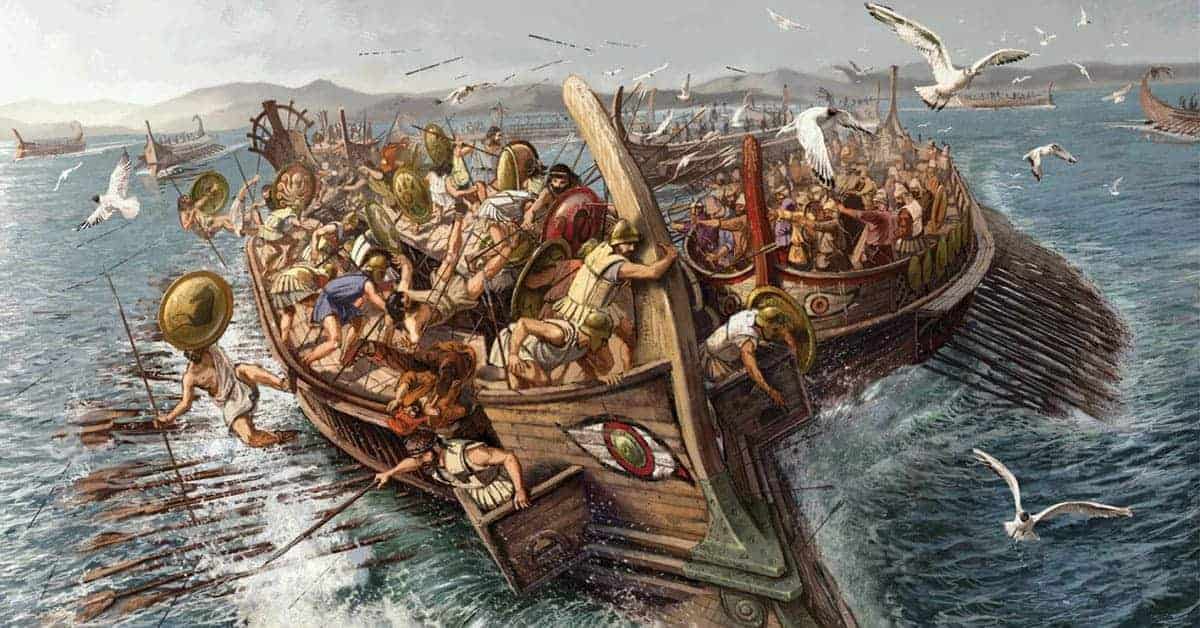The seas have always been used for the expansion of empires and the conquering of worlds. Even in the ancient world great navies would clash upon the waters and would determine which empire would continue. Innovations in naval warfare would constantly change the tides from better strategies to fire that would burn upon the water, the seas were always a place of daring battles whose stories continue to be told upon the seafloor.
Battle of Salamis 490 BCE
The Battle of Salamis occurred after the Persian victories at Artemisium and Thermopylae. King Xerxes and his army had taken over much of Greece and captured Athens in the last days of September 490. Meanwhile, the Greek navy stayed on the isle of Salamis which was opposite Athens. The Persians were upset that the Greeks were preventing them from easily using the Athenian port. The Greek navy was outnumbered and could not win an outright battle against the Persians and therefore they needed a plan.

The story told by Herodotus was that the Athenian admiral Themistocles approached the Persians and acted like a friend. He convinced the Persian navy to enter into the straights of Salamis. Themistocles then had a slave row to show and let the Persians know that the Greek allies should now abandon their position. The Persian army wanted to enter the strait and block both entrances to trap the Greeks.
Once inside the strait things went poorly for the Persians. They struggled to maneuver in the narrow straight and they were not able to retreat. The Persian forces became disorganized and the Greek fleet was able to put themselves in a line and defeat the Persian navy. Nearly a third of King Xerxes’s ships were destroyed before the rest were able to retreat. The Greek navy did not follow the retreating Persian forces.
With a loss of 300 ships for the Persians and only 40 for the Greeks, it was a decisive victory. The remainder of the Persian fleet scattered following the defeat and it forced King Xerxes to put all his plans on hold. He had to delay his land offenses for an entire year which gave the Greek city-states the time they needed to unite against him and finally match his forces. The Battle of Salamis was one of the most decisive naval battles in ancient history.

